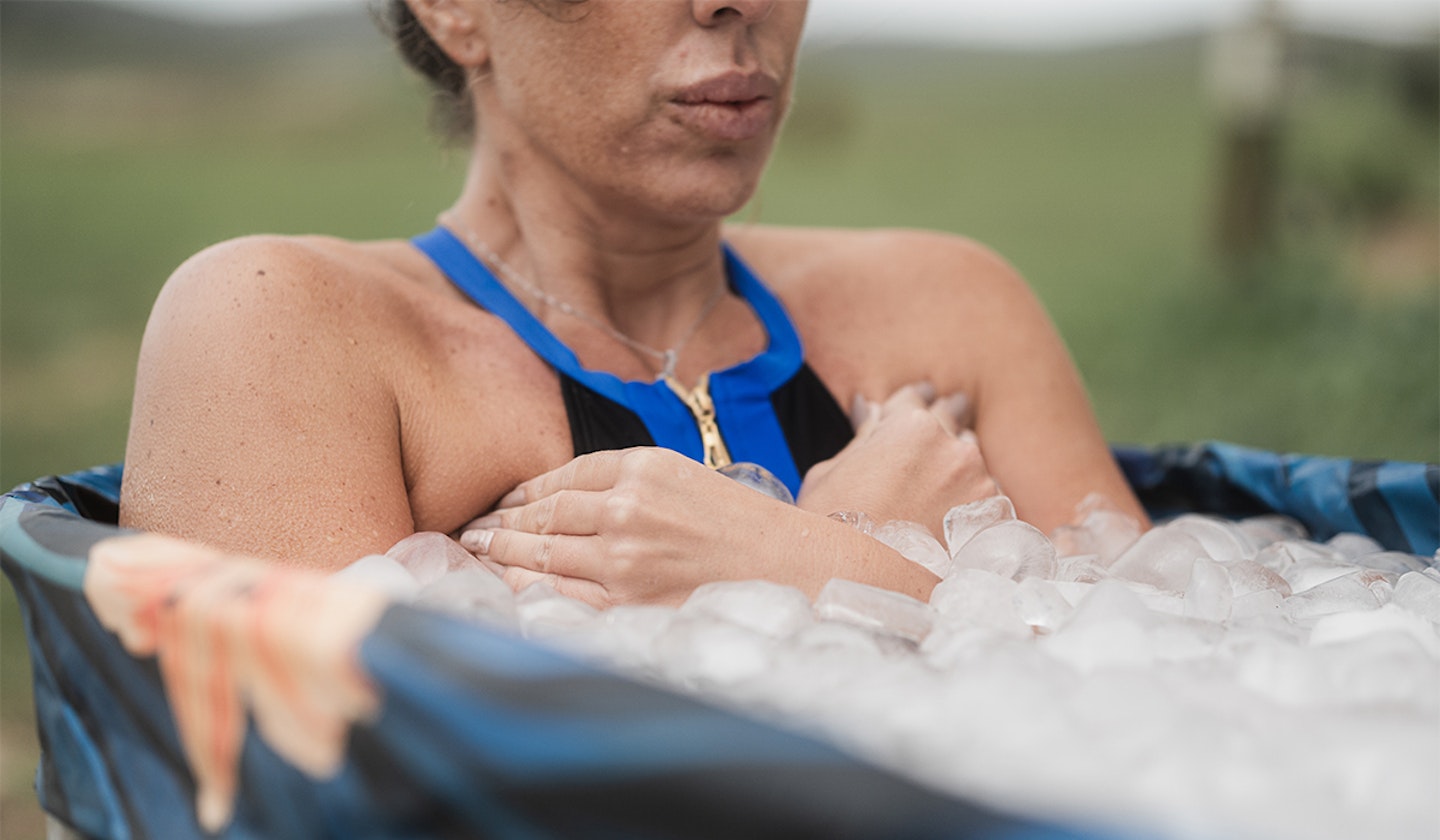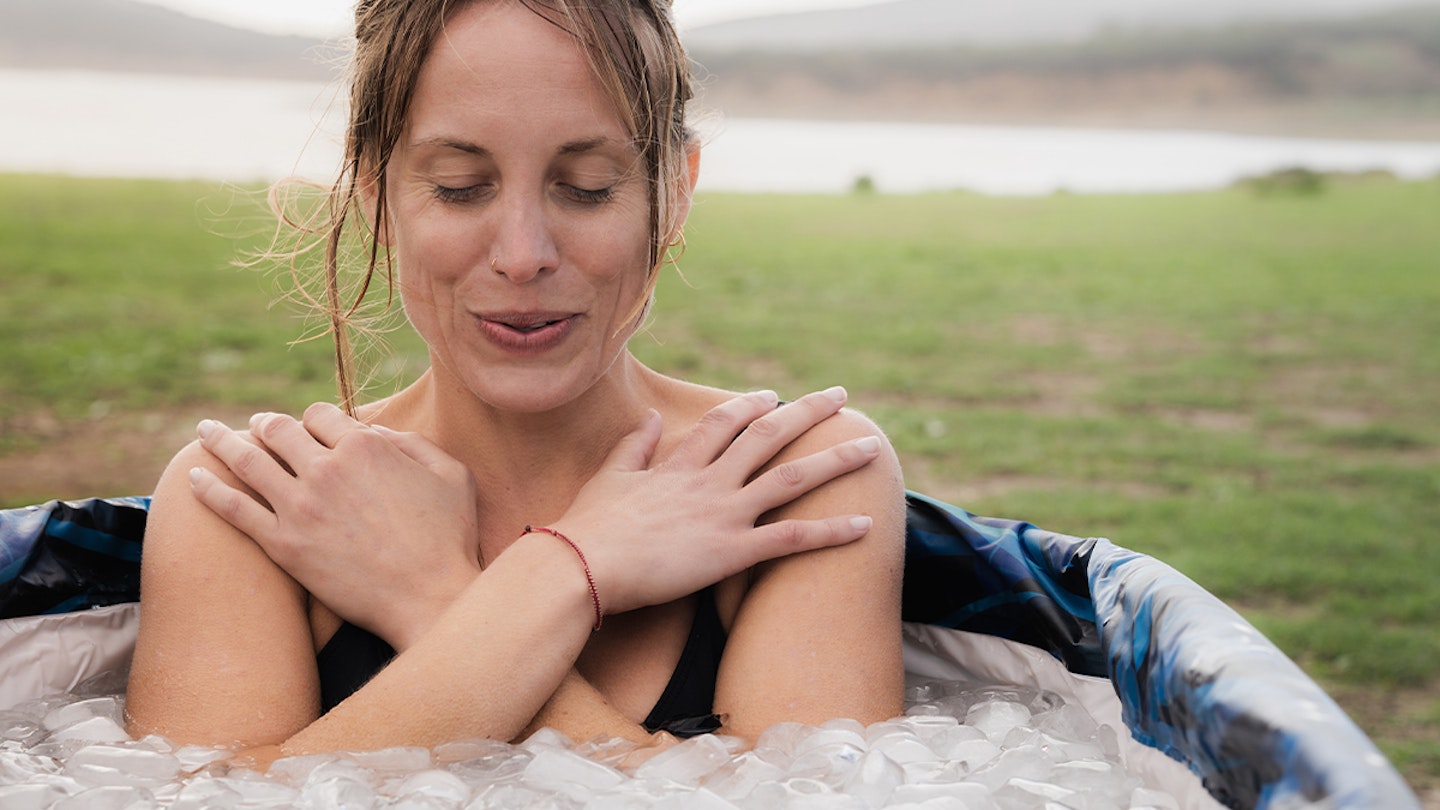Dunking yourself in a bath full of freezing cold, icy water might seem like madness, but according to some experts and professionals, there are some brilliant benefits of ice baths to our health, including weight loss benefits.
You may have seen professional athletes resort to taking an ice bath after competing, but over recent years, ice baths have become a wellness trend for non-athletes to try, and you can even buy pop-up cold water therapy tubs for your home or garden.
However, despite the practice of taking an ice bath becoming hugely popular, with a wide range of celebrities and influencers endorsing it, many doctors have questioned the true benefits of ice baths and the science behind it.
To help you find out more about the true benefits of ice baths and understand whether or not they're really worth braving, we've done all the research for you.
How do ice baths and cold water impact the body?
Also known as cold water immersions, ice baths have been popular for a very long time for post exercise recovery. They're thought to combat inflammation as the cold constricts your blood vessels, meaning blood doesn't flow as quickly to injured or sore areas of the muscles, resulting in reduced inflammation. They work in a similar way as applying an ice pack to an injury would work.
What are the benefits of ice baths?
The expert opinions on ice baths are mixed. While some studies have suggested it provides a placebo effect, others suggest they are an effective recovery tool after high intensity workouts. One particular study found participants felt less sore and generally better and stronger when having an ice bath after exercise. It also found an increased amount of creatine kinase was released into the bloodstream after an ice bath. This is an enzyme that is released into the bloodstream after muscles get damaged during exercise.
As well as helping the body recover after intense exercise, ice baths can also help ease the pain of those suffering with painful, chronic conditions such as arthritis, as it acts like a drug-free anaesthetic.
Many people also find that ice baths are beneficial for their mental health, helping focus and concentration, particularly if you try meditating during your ice bath. Similarly, many people have found ice baths help them relax and sleep better when done after an evening workout.
Ice baths also have their health benefits when it comes to cooling down our body temperatures. They can be used to combat heat stroke, particularly for marathon runners who need to cool down their body temperatures quickly after a race.

Can an ice bath help you lose weight?
Again, the evidence here is mixed, however, there have been several studies that suggest exposure to cold water activates brown fat, which is a tissue that helps keep the body warm while controlling blood sugar and insulin levels which also helps the body burn calories. Despite this, the research into whether or not it actually helps us lose weight is still inconclusive.
Are ice baths safe?
Generally, ice baths are considered safe, however, there are many health conditions that could rule you out of having ice baths including high blood pressure, heart disease, diabetes, circulation issues, peripheral neuropathy and venous stasis to name a few.
Even if you don't have any of the health problems mentioned above or any other pre-existing health conditions, it's a good idea to check with your GP before taking an ice bath if you have any concerns whatsoever. As a general rule, it's not advised for children, particularly young children, to take ice baths.
Equally, if you have injured yourself, and you're using an ice bath to numb the pain but it's not getting any better, you should get it checked out by a health professional to rule out a more serious injury that might require a diagnosis and professional treatment.
How to safely take an ice bath at home
First, you'll need a bathtub or a cold water therapy tub if you don't have a bath in your home. Cold water therapy tubs act as temporary tubs that can fold away or deflate when not in use, making them ideal for smaller spaces.
Fill the tub with cold water that's about 15 degrees Celsius and make sure you have your bags of ice nearby. Once it's got enough water in, gently lower yourself into the tub and slowly add the ice, or ask someone to help you with this. As it's your first ice bath, take it slow and only put as much ice in as you can tolerate.
Aim to stay in the tub for five minutes. As you get more confident taking ice baths, you can gradually work your way up to 10 minutes but no more. The water shouldn't be any colder than 11.6 degrees Celsius, so it's a good idea to use a thermometer to monitor the temperature during the bath. For your first bath, we'd recommend having a 20 degree Celsius bath and staying in there for no longer than five minutes. Alternatively, you may just want to try a cold shower instead of a bath if you're a beginner to see how you and your body reacts.
If you do find that they work for you and you benefit from them, then you can try having an ice bath after intense exercise, around once or twice per week.
Are the benefits of an ice bath the same as cold water swimming?
Again, there is no clear answer to this, but heading outside for a cold open water swim with a bunch of like minded friends can be great for your mental health, so it's worth trying if you're interested in cold water therapy.
If however you're not a strong swimmer, ice baths can be a brilliant alternative to open water swimming, where you can enjoy all the benefits of cold water therapy without worrying about swimming.
To enjoy more regular stories just like this, become a Yours subscriber and become part of our fun and friendly community of like-minded readers.
Lorna White is a Senior Digital Writer at Yours.co.uk. She was previously a writer at Yours Magazine writing features and news stories before joining the digital team. Lorna loves the great British countryside and likes to spend her spare time out and about in her home of Nottinghamshire walking her dog, Pippin.

